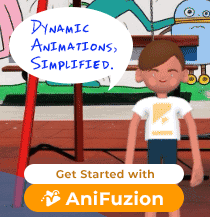Choosing Between Flipbooks and Static PDFs: A Marketer’s Dilemma
In the ever-evolving world of digital marketing, content delivery plays a pivotal role in engaging audiences. As marketers, we constantly seek innovative ways to capture attention, retain interest, and drive conversions. One powerful strategy that has gained prominence is the conversion of static PDFs into dynamic flipbooks. But is this approach always the best choice? Let’s explore the pros and cons of both flipbooks and static PDFs to help you make an informed decision.
The Case for Flipbooks
Pros:
- Enhanced Engagement:
- Flipbooks offer an interactive reading experience. Users can flip through pages, click on multimedia elements, and explore links.
- Increased engagement leads to better retention of information and a more positive user experience.

- Visual Appeal and Branding:
- Customizable templates allow you to create visually stunning flipbooks that align with your brand.
- Consistent branding reinforces recognition and leaves a lasting impression.

- Immersive Multimedia Integration:
- Seamlessly incorporate videos, animations, and audio clips.
- Showcasing product features or services becomes more effective and engaging.
- Increased Shareability:
- Flipbooks are highly shareable across platforms.
- Social media sharing options and embeddable codes expand your reach.

- Mobile-Friendly Experience:
- Designed to function seamlessly on smartphones and tablets.
- Users can access flipbooks anytime, anywhere, leading to increased engagement and conversions.

Cons:
- Learning Curve:
- Creating flipbooks may require learning new tools or platforms.
- Initial investment of time and effort.
- Resource Intensive:
- Multimedia elements can increase file size, affecting loading times.
- Balancing interactivity with performance is crucial.
- Compatibility Challenges:
- Some older devices or browsers may not fully support flipbook features.
- Testing across various environments is essential.
The Case for Static PDFs
Pros:
- Universal Compatibility:
- PDFs are widely supported across devices and platforms.
- No surprises—what you see is what you get.

- Simplicity:
- No additional tools or skills needed to create or view PDFs.
- Familiarity for users.

- Consistent Formatting:
- PDFs maintain layouts, fonts, and design integrity.
- Ideal for official documents, reports, and forms.

- Print-Ready:
- PDFs are suitable for printing physical copies.
- Maintains high-quality resolution.

Cons:
- Limited Interaction:
- Static PDFs lack interactivity.
- Users may skim through without deep engagement.
- Visual Constraints:
- Complex designs or multimedia elements are challenging to incorporate.
- Limited scope for creativity.
- Less Shareable:
- Sharing PDFs may require separate attachments or downloads.
- Not as engaging for social media sharing.
- Mobile Challenges:
- PDFs may not display optimally on small screens.
- Scrolling and zooming can be cumbersome.
Choosing Wisely
Consider your specific goals, audience, and content type when deciding between flipbooks and static PDFs. Each approach has its merits. If engagement, interactivity, and visual appeal are paramount, flipbooks may be your best bet. However, if universal compatibility, simplicity, and consistency matter more, stick with PDFs. Ultimately, the right choice depends on your marketing objectives and the preferences of your target audience.
Remember, whether you flip or stay static, the key is to create memorable experiences that resonate with your audience. Happy marketing! 🎨📖🚀
Unlock your marketing potential with Fliplify, the preferred flipbook maker that combines interactivity, visual appeal, and mobile-friendly experiences. Try it now!🌟You may took a look of the flipbooks examples below:


